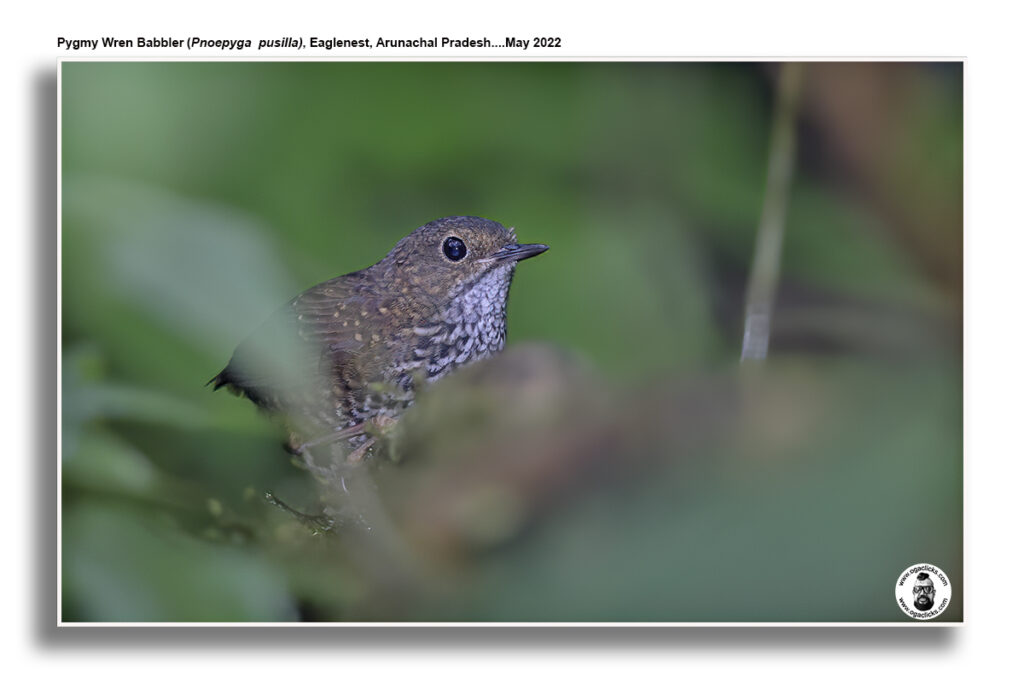
Pygmy Wren Babbler Pnoepyga pusilla
Etymology:
- Pnoepyga : Greek Word pnoe– puff; puge– rump { Puff Rumped}
- Pusilla: Latin Word Tiny, very small
Vernacular Names: Naga: Inrui-ba gadeba
Distribution in India: Resident of Himalayas and North East India.
Description: size of 7·5–9 cm; wt. of 11–15 g. It’s a tiny, almost tailless olive-backed babbler with pale scaling below. It occurs in in two morphs. Nominate race pale morph (“white-scaled”) is greyish olive-brown from crown to rump with slight dark scaling, upperwing is browner with small buffy subterminal spots on scapulars, wing-coverts and tertials. The head-sides are greyish olive-brown, ear-coverts are with indistinct pale shaft streaks. The chin and throat are off-white with narrow grey-brown scaling, breast and belly are off-white, each feather with grey-brown chevron-shaped centre and narrow grey-brown margin producing very scaly effect, flanks are olive-brown with buffy-olive scaling. The iris is dark brown or brown. The bill is blackish, paler below. The legs are pale dull brown. The dark morph (“ochre-bellied”) is olive-brown above with ochre drop on each feather, white below replaced by ochre. Both the sexes are similar. The juvenile is plain above except for warm buff tips of greater wing-coverts and tertials, plain below, whitish throat and belly shading to dark greyish on breast and flanks.
Habitat: It is found in floor and understorey of broadleaf evergreen forest, densely vegetated forest ravines, mossy boulders, fallen logs, dense fern growth, luxuriant moss. .It occurs from 1000–2850 m. in Indian Subcontinent descending as low as 200 m in winter.
Food habits: It eats ants and other small insects, spiders, snails and grubs. It forages on or close to ground among leaf litter, around rotting tree trunks and among tangled vegetation. It occasionally climbs up in trees, keeping to thicker moss-covered branches.
Breeding habits: They breed in Mar–Sept .The nest is built by both sexes. The nest is a small ball of moss, rootlets, bark shreds and leaf skeletons, or a built-in structure made of long strands of brilliant green moss, the inner strands compactly and firmly woven to form tiny cup, both well lined with black or other rootlets and fibres , placed in moss, orchids, ferns or creepers hanging down tree trunks, vertical rocks, fallen log, bank by trail or upturned tree roots. They lay a clutch of 2–6 eggs.